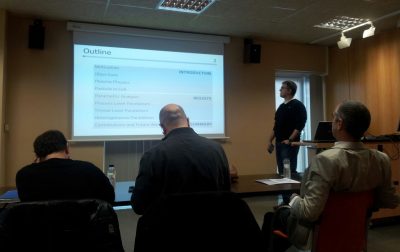
Xavier Sáez, researcher at Fusion group, presented his PhD dissertation with the name Particle-in-Cell Algorithms for Plasma Simulations on Heterogeneous Architectures. The presentation, hosted by the UPC on 25 January 2016 at 11:00, discussed research on PIC codes on trending hardware architectures and new programming models.
The growth of computational power has introduced a new approach to science, Computational Physics. Its impact on the study of nuclear fusion and plasma physics has been very significant. This is because the experiments are difficult and expensive to perform whereas computer simulations of plasma are an efficient way to progress. Particle-In-Cell (PIC) is one of the most used methods to simulate plasma. The improvement in the processing power has enabled to increase the size and complexity of the PIC simulations.
Most PIC codes have been designed with a strong emphasis on the physics and have traditionally included only process level parallelism. This approach has not taken advantage of multiprocessor platforms. Therefore, these codes exploit inefficiently the new computing platforms and, as a consequence, they are still limited to using simplified models.

The aim of this thesis is to incorporate in a PIC code the latest technologies available in computer science in order to take advantage of the upcoming multi-core supercomputers, such as designs based on heterogeneous architectures. This will enable an improvement of simulations, either by introducing more physics in the code or by incorporating more detail to the simulations.
Last but not least, this thesis should not be seen as the end of a way, but rather as the beginning of a work to extend the physics simulated in fusion codes through exploiting available HPC resources.

What a great Blog!!